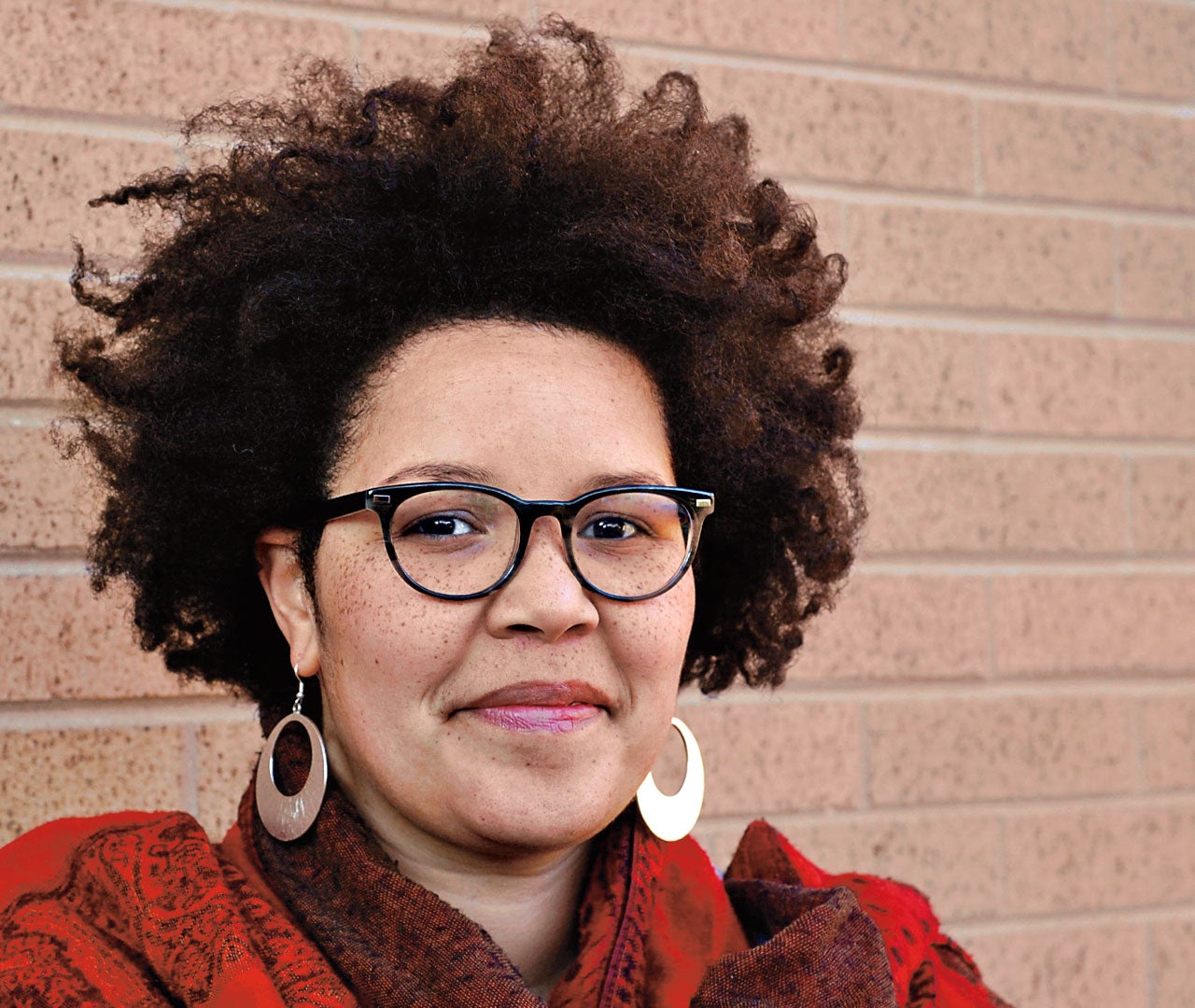
Growing up, I was one of only a few Black girls in a town full of White people in Warwick, New York. I liked to ride my bike and walk down the railroad tracks after school. I was obsessed with Led Zeppelin and hippies, and often grilled my mom and grandparents about what it was like to live in the sixties. It was the only era that showed Black girls with style similar to mine—they wore patterned skirts like the ones I bought in thrift shops and they donned the natural hair I desperately wanted.
I was surprised to find that no one ridiculed me more than the other Black people in my neighborhood. My straight hair and nineties Valley Girl–inflected patter made me an easy target for girls with gold door knocker earrings and Cross Colours jackets who sucked their teeth as they passed me in the hall and hissed “White girl!” They made it clear to me that there was only one way to be Black, and with my penchant for wearing handmade clothes, dying and shaving parts of my hair, and listening to heavy metal music, I was not it. I didn’t discover my identity as much as I was pushed into it: Weirdo. Artistic. Not really Black.
After a while, not fitting in with most of my high school classmates didn’t matter because I simply didn’t fit in anywhere, which brought a sense of freedom. But I was still affected by antiquated views of Blackness. When I graduated and moved out of my small town, it took me longer than it should have to make Black friends anywhere I went. I was always worried they would change their minds about whether I really fit in, and I found myself waiting for that “White girl” hiss to float into my ears and sit in my heart like a stone.
Then, over time, weirdness became cool. Nerds were hip, and what I was suddenly had a name: Afropunk. When I saw pictures from the first Afropunk music festival in Brooklyn, I was filled with longing for a community I was never able to find when I was young. One female reveler had brown dreadlocks piled high on her head and wore dark, dramatically winged eyeliner, large wood hoop earrings and an old cropped Ramones T-shirt with a pair of ripped denim shorts. It was basically the uniform of my late twenties.
Afropunk introduced me to the carefree Black girl—she, like me, rejects the idea that being Black means engaging in a constant social and cultural struggle to be accepted. She has fun, is a little reckless and defines herself not by considering what others think it means to be Black but by focusing on what makes her smile. I am happy that Black girls today might feel less alienated culturally because they have these images of natural, happy Black women to reference. But I’m also worried that the emphasis on being carefree just gives us another set of rules to follow. The notion of the carefree Black girl as the modern, best version of Blackness can be alienating to anyone who wants to wear her hair straight or appear more mainstream. It could have the same effect on girls now that “normal” Blackness had on me when I was growing up.
My hope is that the carefree Black girl concept works in tandem with other notions of Blackness. It’s possible that at 37, I’m just too old for the idea of the carefree Black girl to take root, as I’ve already found a way to be a confident weirdo. What I want more than anything is for Black girls to have balance, to feel accepted at every stage across the spectrum of their lives. I want to float back to my younger self, grab her paint-stained hands in mine and tell her that she’s already enough.
Danielle Henderson (@knottyyarn) is a New York City–based writer and the author of Feminist Ryan Gosling (Running Press).
This article originally appeared in the May 2015 issue of ESSENCE magazine, on newsstands now.